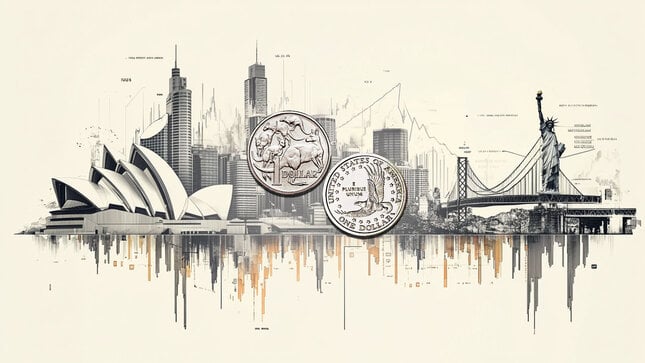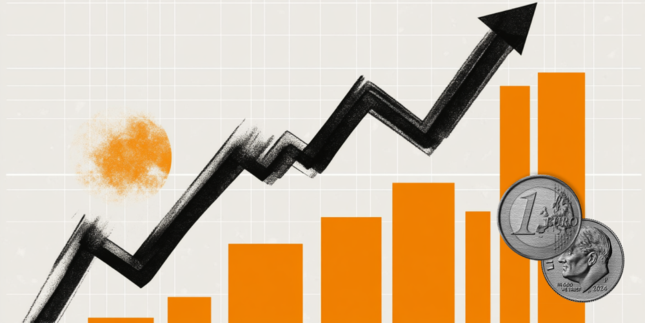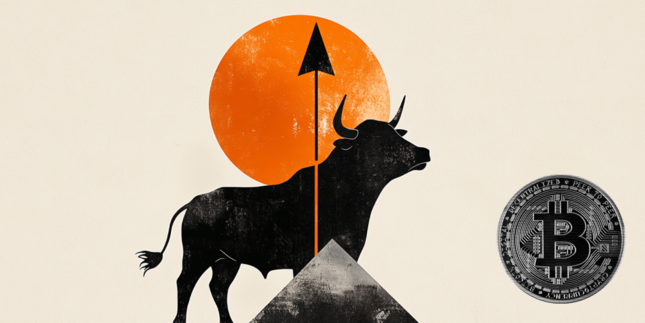- The US Dollar trades in a range despite rising tensions in the Middle East and Asia.
- Traders are gearing up for US Retail Sales and Michigan Consumer Sentiment numbers this week.
- The US Dollar Index in the mid-102 area while world leaders convene in Davos for the World Economic Forum.
The US Dollar (USD) is still stuck in a range while markets are puzzling to see where to go next. Several moving parts are in the mix with US economic data starting to show a very mixed picture with several data points in contraction while the labour market remains very tight. Add to that the World Economic Forum taking place in Davos, while at the same time Israel, Gaza, Red Sea, Yemen, Ukraine and Russia remain the hot topics smouldering in the background.
On the economic data front focal points this week will be Wednesday and Friday, while traders enjoy a day off on Monday. With Martin Luther King Day, the US trading session will be moving on very low volumes. Wednesday traders will gear up for US retail sales and on Friday the University of Michigan will tell markets more on the Consumer Sentiment.
Daily digest market movers: Iowa ahead on day off
- US markets are closed for Martin Luther King Day.
- Headlines will be coming out of the Swiss town of Davos with the World Economic Forum taking place.
- The key state Iowa is set to have its GOP Caucus votes this Monday evening, with Trump expected to win.
- Tensions are building in Asia with the Democratic party winning the elections in Taiwan, reinforcing the vote for independence away from China.
- German Gross Domestic Product (GDP) falls into contraction, at -0.3% against 1.8% previous.
- Equity markets are setting a new record with Japan’s Nikkei jumping over 1% and printing a new 34-year high. Meanwhile European equities are in the red after a negative Gross Domestic Product print from Germany and sinking Industrial Production numbers in Europe.
- The CME Group’s FedWatch Tool shows that markets are pricing in a 94.8% chance that the Federal Reserve will keep interest rates unchanged at its January 31 meeting. Around 5.2% expect the first cut already to take place.
- The benchmark 10-year US Treasury Note holds near 3.94%, and will not move this Monday due to closed trading.
US Dollar Index Technical Analysis: 2024 will be different from 2023
The US Dollar Index (DXY) is starting to develop a pattern for 2024, and it looks to be completely different from 2023. The economic data points are not moving the needle anymore like they did in 2023, with rather macroeconomic news to drive the DXY either up or down. The overnight outcome of the Iowa Primary, which counts as a litmus test for the Presidential Elections in November, could send the DXY off in a direction that will build up all the way back to November levels.
The first level on the upside to watch is 102.70, which falls nearly in line with the trend line from the top of October 3 and December 8. If broken and closed above, the 200-day Simple Moving Average (SMA) at 103.44 comes into play. The 104.00 level might be too far off, with 103.56 (55-day SMA) coming in as the next resistance.
A rejection by the descending trendline will give fuel to Greenback bears leading to a further downturn. The line in the sand here is 101.74 – the floor which held halfway through December before breaking down in the last two weeks. In case the DXY snaps this level, expect to see a test at the low near 100.80.
Central banks FAQs
What does a central bank do?
Central Banks have a key mandate which is making sure that there is price stability in a country or region. Economies are constantly facing inflation or deflation when prices for certain goods and services are fluctuating. Constant rising prices for the same goods means inflation, constant lowered prices for the same goods means deflation. It is the task of the central bank to keep the demand in line by tweaking its policy rate. For the biggest central banks like the US Federal Reserve (Fed), the European Central Bank (ECB) or the Bank of England (BoE), the mandate is to keep inflation close to 2%.
What does a central bank do when inflation undershoots or overshoots its projected target?
A central bank has one important tool at its disposal to get inflation higher or lower, and that is by tweaking its benchmark policy rate, commonly known as interest rate. On pre-communicated moments, the central bank will issue a statement with its policy rate and provide additional reasoning on why it is either remaining or changing (cutting or hiking) it. Local banks will adjust their savings and lending rates accordingly, which in turn will make it either harder or easier for people to earn on their savings or for companies to take out loans and make investments in their businesses. When the central bank hikes interest rates substantially, this is called monetary tightening. When it is cutting its benchmark rate, it is called monetary easing.
Who decides on monetary policy and interest rates?
A central bank is often politically independent. Members of the central bank policy board are passing through a series of panels and hearings before being appointed to a policy board seat. Each member in that board often has a certain conviction on how the central bank should control inflation and the subsequent monetary policy. Members that want a very loose monetary policy, with low rates and cheap lending, to boost the economy substantially while being content to see inflation slightly above 2%, are called ‘doves’. Members that rather want to see higher rates to reward savings and want to keep a lit on inflation at all time are called ‘hawks’ and will not rest until inflation is at or just below 2%.
Is there a president or head of a central bank?
Normally, there is a chairman or president who leads each meeting, needs to create a consensus between the hawks or doves and has his or her final say when it would come down to a vote split to avoid a 50-50 tie on whether the current policy should be adjusted. The chairman will deliver speeches which often can be followed live, where the current monetary stance and outlook is being communicated. A central bank will try to push forward its monetary policy without triggering violent swings in rates, equities, or its currency. All members of the central bank will channel their stance toward the markets in advance of a policy meeting event. A few days before a policy meeting takes place until the new policy has been communicated, members are forbidden to talk publicly. This is called the blackout period.
Information on these pages contains forward-looking statements that involve risks and uncertainties. Markets and instruments profiled on this page are for informational purposes only and should not in any way come across as a recommendation to buy or sell in these assets. You should do your own thorough research before making any investment decisions. FXStreet does not in any way guarantee that this information is free from mistakes, errors, or material misstatements. It also does not guarantee that this information is of a timely nature. Investing in Open Markets involves a great deal of risk, including the loss of all or a portion of your investment, as well as emotional distress. All risks, losses and costs associated with investing, including total loss of principal, are your responsibility. The views and opinions expressed in this article are those of the authors and do not necessarily reflect the official policy or position of FXStreet nor its advertisers. The author will not be held responsible for information that is found at the end of links posted on this page.
If not otherwise explicitly mentioned in the body of the article, at the time of writing, the author has no position in any stock mentioned in this article and no business relationship with any company mentioned. The author has not received compensation for writing this article, other than from FXStreet.
FXStreet and the author do not provide personalized recommendations. The author makes no representations as to the accuracy, completeness, or suitability of this information. FXStreet and the author will not be liable for any errors, omissions or any losses, injuries or damages arising from this information and its display or use. Errors and omissions excepted.
The author and FXStreet are not registered investment advisors and nothing in this article is intended to be investment advice.
Recommended content
Editors’ Picks

AUD/USD: Momentum favours further gains
In line with the broad recovery in the risk-linked complex, AUD/USD left behind a two-day negative streak and resumed its uptrend towards the 0.6400 region, always on the back of the resurgence of quite a strong downside pressure hitting the US Dollar on Thursday.

EUR/USD: Extra advances appear in the pipeline Premium
EUR/USD followed the widespread improved sentiment in the risk-linked galaxy and managed to set aside two daily drops in a row and refocus on the upper end of its recent range around the 1.1400 zone on Thursday.

Gold sticks to the bullish stance near $3,330
On Thursday, gold regained lost ground after two consecutive days of declines, with XAU/USD climbing back toward $3,300 per troy ounce following an earlier rally to roughly $3,370. The metal drew safe-haven buying as renewed fears of a US–China trade flare-up weighed on broader markets.

Crypto Today: SUI and Trump token in profit, BTC price fails $95K test amid rumours of lower China tariff
The cryptocurrency market capitalization dips below $3 trillion on Thursday, retreating 3.5% from the 50-day peak of $3.2 trillion recorded earlier this week.

Five fundamentals for the week: Traders confront the trade war, important surveys, key Fed speech Premium
Will the US strike a trade deal with Japan? That would be positive progress. However, recent developments are not that positive, and there's only one certainty: headlines will dominate markets. Fresh US economic data is also of interest.

The Best brokers to trade EUR/USD
SPONSORED Discover the top brokers for trading EUR/USD in 2025. Our list features brokers with competitive spreads, fast execution, and powerful platforms. Whether you're a beginner or an expert, find the right partner to navigate the dynamic Forex market.



